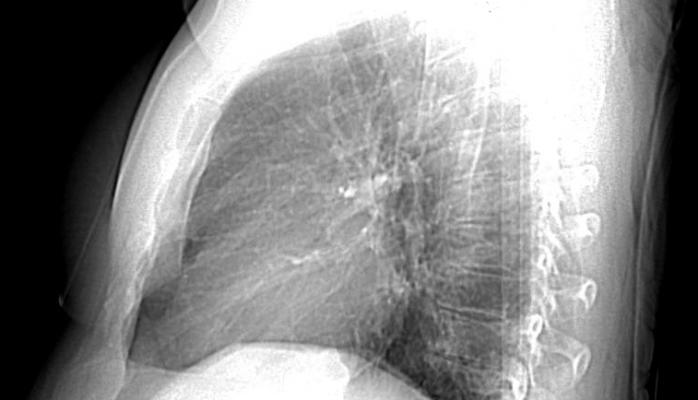
April 2, 2012 — It seems a picture is worth more than a thousand words for people who see evidence of coronary artery disease, the most common type of heart disease in men and women. Simply seeing a build-up of calcium in the walls of arteries appears to prompt patients to better adhere to both statin therapy and recommendations for weight loss, according to research presented at the American College of Cardiology’s 61st Annual Scientific Session in Chicago.
In two related studies, patients undergoing coronary artery calcium (CAC) scoring with cardiac computed tomography (CT) were shown images of their arteries. The researchers found the most striking results among patients with increasingly severe disease.
Individuals with the most severe disease, or those with a CAC score over 400, who saw images of their heart were 2.5 times more likely to take statins as directed and more than three times more likely to have lost weight compared to those who had a scan and saw little or no evidence of underlying disease. These findings are significant because patient compliance is often a major barrier to effectively preventing and treating heart disease. For instance, compliance to statin therapy has been reported to be as low as 20 to 50 percent.
“Beyond the diagnostic and predictive value of cardiac computed tomography, it is also quite beneficial in terms of motivating people to pursue behaviors that we know result in a reduction in cardiovascular mortality and morbidity,” said Nove Kalia, M.D., one of the lead investigators for both studies. “Taking medication as directed, as well as adhering to behavioral modification, such as exercise for weight loss, can both have a huge impact on cardiovascular events going forward. What’s most interesting is that the higher the person’s calcium score, the more likely they were to be compliant.”
Kalia said that while previous studies have investigated the impact that patient-viewed cardiac scans can have on behavior, these are the first large-scale studies to corroborate similar results seen in a previous study looking at a reduction in Framingham risk score; they also found statistically significant findings across all CAC scores. The researchers split groups into quartiles based on their score, which correlates in linear fashion with the severity of their disease.
The statin study included 2,100 individuals who underwent baseline CAC testing and completed a follow-up questionnaire; it found compliance was lowest (36 percent) among those with a CAC score of 0, which is indicative of very little to no disease, and was then found to increase as CAC scores increased. (1 to 99, 51.8 percent; 100 to 399, 56.5 percent; more than or equal to 400, 59.1 percent; p <0.001 for trend).
In logistical regression analysis, those with CAC scores of 1-99, 100-400 and more than 400, as compared to those with a score of 0, were 2- (95 percent CI 2-3.5 p<0.001), 2.4- (95 percent CI 2-3.5 p<0.001) and 2.6- (95 percent CI 2-3.5 p<0.001) fold, respectively, more likely to adhere to statin therapy when adjusted for age, gender and race.
Similar trends were found in the weight loss study (518 patients) in which behavioral modification resulting in weight loss was also lowest among those who saw the scan and did not have any evidence of coronary artery calcification. These individuals only lost weight 20 percent of the time, whereas those with severe disease (CAC more than 400) lost weight 40 percent of the time. In logistical regression analysis, those with CAC score of 1-99, 100-400 and more than 400, as compared to those with a score of 0, were 2- (95% CI 1.1-3.9 p<0.001), 3.6- (95% CI 1.7-7.3 p<0.001) and 3.3- (95% CI 1.6-6.9 p<0.001) fold respectively more likely to lose weight when adjusted for age, gender and race.
“Seeing a coronary artery calcium scan gives patients a visual picture of how severe their disease is, and this picture seems to have a really big impact,” said Kalia. “With increasing use of noninvasive imaging, it seems we already have a powerful tool in helping to motivate patients to be compliant. While we haven’t clarified whether this increased compliance results in reductions in event rates we have extrapolated that this would likely be the case. I think we may find this can also help improve outcomes.”
Kalia said this is an important line of inquiry given that studies showing the benefits of medications and weight loss to prevent or treat heart disease assume fairly high compliance rates that are not sustained in real life. He said he hopes that cardiac images, which are already a routine part of patient evaluation, further motivate patients to take action for their heart health.
Because this was a retrospective study, the reasons for doing the CAC study were varied across patients. All patients underwent baseline CAC testing; those in the statin study then completed a comprehensive follow-up questionnaire and those in the weight loss study returned for a follow-up scan with documented weight taken at visits one and two. The database used went back a decade, meaning the indications for getting scans have changed and expanded since the start of the study. Today, coronary CT scans are most commonly used to risk stratify people who arrive at the hospital with chest pains or suspected coronary disease and are considered to be at intermediate risk.
Additional research is warranted to confirm these findings prospectively and to look at how increased compliance translates to improved outcomes for patients. Kalia reports no conflicts of interest.
For more information: www.acc.org


 January 05, 2026
January 05, 2026 









